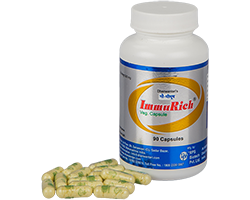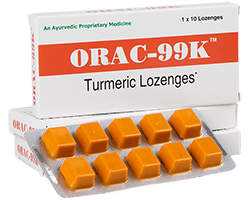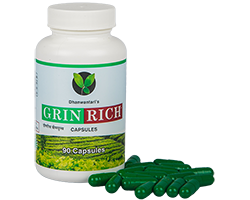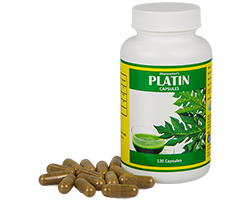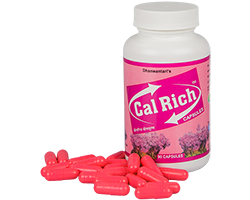Toll Free No.: 1800 2330 0007 email: admin@dhanwantari.com

Skin & Endocrine System
Integumentary system
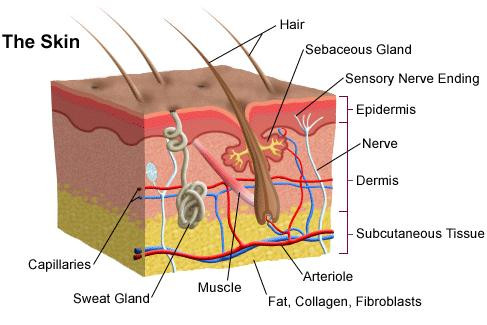
The integumentary system is the largest organ system in the human body, and is responsible for protecting the body from most physical and environmental factors. The largest organ in the body is the skin. The integument also includes appendages, primarily the sweat and sebaceous glands, hair, nails and arrectores pillorum (tiny muscles at the root of each hair that cause goose bumps).
The skin consists of three layers: the epidermis, the dermis, and the subcutaneous layer. The epidermis, or outer layer, is made of several layers of epithelial cells that contain the hard, fibrous protein keratin that gives skin flexibility, creates a seal that prevents dehydration, and forms a protective barrier. This layer also contains melanocytes that produce the pigment melanin, which gives the skin its color. The dermis, or middle layer, consists of fibrous proteins that give the skin strength and elasticity. This layer contains the nerves, hair follicles, glands, and blood vessels. The subcutaneous layer consists mostly of fat, which connects the skin to the muscle beneath and provides insulation from trauma and heat loss.
Hair, Nails, and Glands are also part of the integumentary system. All of these structures are made of epithelial cells, which are specialized to meet the function of the structure.
Hair sparsely covers the body except on the soles of the feet, palms of the hands, lips, nipples, and parts of the external reproductive organs. The eyelashes and eyebrows protect the eyes from dust and perspiration, and the nasal hairs prevent dust from entering the pharynx and the lungs. The hair on the scalp keeps the head warm. All hairs grow from a root within a follicle. As the hair lengthens, the epithelial cells thicken and keratinize like the epidermis. Nails give limited protection to the nerve endings of the hands and feet. Each nail grows from a nail matrix, and as the cells push away from the matrix, they fill with keratin to form a flexible covering for the tip of each finger and toe.
Skin contains two types of glands: sebaceous and sudoriferous. Sebaceous (oil) glands and sudoriferous (sweat) glands are exocrine glands that excrete substances through ducts
The sebaceous glands secrete sebum, an oily substance that lubricates and helps waterproof the hair and skin and inhibits the growth of bacteria on the surface of the skin. During the aging process, the production of sebum is decreased, which generally accounts for dryer skin and brittle hair in elderly people.
The sudoriferous glands secrete sweat, an odorless, watery substance that aids in cooling the body. In the axillary and genital regions, these glands produce sweat that reacts to the bacteria in these areas, producing a distinctive odor. Modified sweat glands are the mammary glands and the ceruminous glands. The mammary glands are located in the breasts and secrete milk; the ceruminous glands are located in the ears and secrete cerumen, or ear wax. Cerumen provides lubrication and helps prevent microorganisms and insects from entering the ear.
Lymphatic System
The main function of the lymphatic system is to extract, transport and metabolise lymph, the fluid found in between cells. The lymphatic system is very similar to the circulatory system in terms of both its structure and its most basic function (to carry a body fluid).
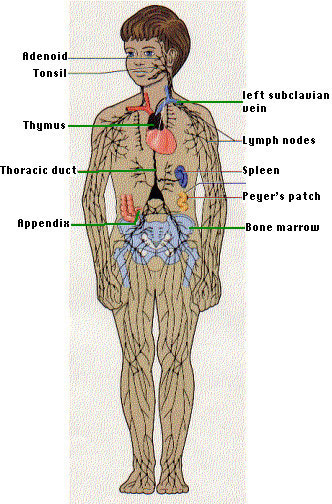
ENDOCRINE SYSTEM
The endocrine system is the system of glands, each of which secretes different types of hormones directly into the bloodstream (some of which are transported along nerve tracts to maintain homeostasis.
Features of endocrine glands are, in general, their ductless nature, their vascularity, and usually the presence of intracellular vacuoles or granules storing their hormones. In contrast, exocrine glands, such as salivary glands, sweat glands, and glands within the gastrointestinal tract, tend to be much less vascular and have ducts or a hollow lumen.The endocrine system is made of a series of glands that produce chemicals called hormones. A number of glands that signal each other in sequence.

Skin Problems & Treatments
Skin problems are common for people of all ages. Whether you suffer with a rash, itchy skin, skin fungus or infection, skin bumps, or skin tags, there’s good treatment available for a variety of skin diseases.
Skin Infections
| 1. | Bacterial Skin Infections |
Leprosy: Leprosy is caused by a slow-growing type of bacteria called Mycobacteriumleprae (M. leprae).
Carbuncles: A carbuncle is a red, swollen, and painful cluster of boils that are connected to each other under the skin.
Staph Infection and Cellulitis: The infection often begins with a little cut, which gets infected with bacteria. These staph infections range from a simple boil to antibiotic-resistant infections to flesh-eating infections.
Impetigo: Impetigo is a highly contagious bacterial skin infection. It can appear anywhere on the body but usually attacks exposed areas.
Boils: A boil is a skin infection that starts in a hair follicle or oil gland. At first, the skin turns red in the area of the infection, and a tender lump develops. After four to seven days, the lump starts turning white as pus collects under the skin.
Pilonidal Cyst and Abscess: A pilonidal cyst occurs at the bottom of the tailbone (coccyx) and can become infected and filled with pus. Once infected, the technical term is pilonidal abscess.
Prevention
Avoid Bacteria That Can Cause Infection :
| 1. | Keep your hands clean : Wash with soap and water for 20 seconds or use an antibacterial cleanser after you come into contact with persons who are ill or public places in general. | |
| 2. | Clean cuts and other skin wounds with soap and water and apply an antibacterial ointment : Cover the wound to keep it safe from invading bacteria. |
| 2. | Fungal Skin Infections |
Fungal Skin Infections
Fungal infections of the skin are very common and include athlete's foot, jock itch, ringworm, and yeast infections.
Ringworm
Worms don't cause ringworm. Rather, this superficial skin infection, also known as tinea, is caused by fungi called dermatophytes.
Athlete's Foot
Athlete's foot is a common fungal infection and you don't have to be an athlete to get it. This annoying ailment occurs in boys, girls, men, and women of all ages.
Candidiasis (Yeast Infection)
Candidiasis is an infection caused by a group of yeast. There are more than 20 species of Candida, the most common being Candida albicans. These fungi live on all surfaces of our bodies.
Sporotrichosis
This fungus is related more closely to the mold on stale bread or the yeast used to brew beer than to bacteria that usually cause infections. The mold is found on rose thorns, hay, sphagnum moss, twigs, and soil. Therefore, the infection is more common among gardeners who work with roses, moss, hay, and soil.
Fungal Nail Infections
A fungal nail infection occurs when a fungus attacks a fingernail, a toenail, or the skin under the nail, called the nail bed.
| 3. | Viral Skin Infections |
Molluscum Contagiosum
Molluscum contagiosum is a viral skin infection that causes either single or multiple raised, pearl-like bumps (papules) on the skin.
Shingles
Shingles (herpes zoster) results from a reactivation of the virus that also causes chickenpox.
Chickenpox
Chickenpox (varicella), a viral illness characterized by a very itchy red rash, is one of the most common infectious diseases of childhood.
Candidiasis (Yeast Infection)
Candidiasis is an infection caused by a group of yeast. There are more than 20 species of Candida, the most common being Candida albicans. These fungi live on all surfaces of our bodies.
Sporotrichosis
This fungus is related more closely to the mold on stale bread or the yeast used to brew beer than to bacteria that usually cause infections. The mold is found on rose thorns, hay, sphagnum moss, twigs, and soil. Therefore, the infection is more common among gardeners who work with roses, moss, hay, and soil.
Fungal Nail Infections
A fungal nail infection occurs when a fungus attacks a fingernail, a toenail, or the skin under the nail, called the nail bed.
A. Psoriasis
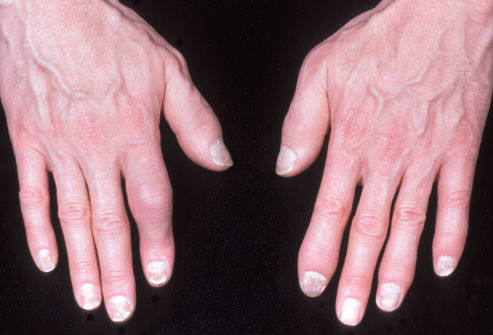 |
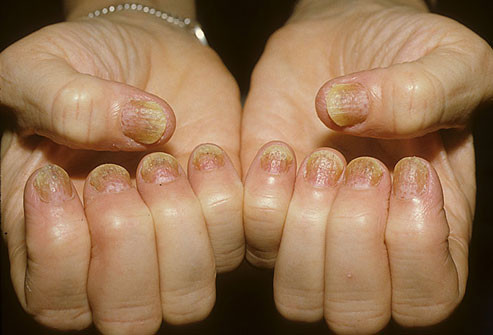 |
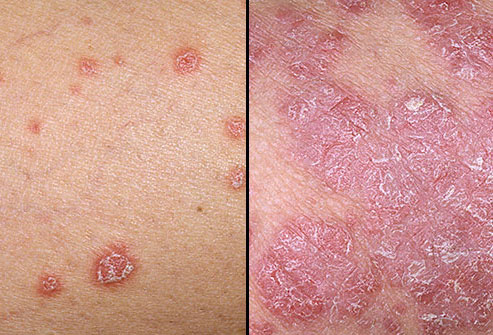 |
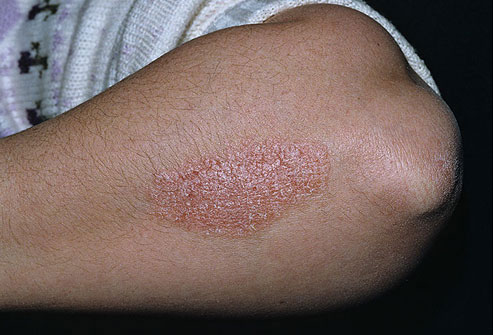 |
Psoriasis is a long-term (chronic) skin problem that causes skin cells to grow too quickly, resulting in thick, white, silvery, or red patches of skin.
The patches range in size from small to large. They most often appear on the knees, elbows, scalp, hands, feet, or lower back. Psoriasis is most common in adults. But children and teens can get it too.
Having psoriasis can be embarrassing.
A doctor can usually diagnose psoriasis by looking at the patches on your skin, scalp, or nails.
Most cases of psoriasis are mild, and treatment begins with skin care. This includes keeping your skin moist with creams and lotions. These are often used with other treatments including shampoos, ultraviolet light, and medicines your doctor prescribes.
In some cases, psoriasis can be hard to treat. You may need to try different combinations of treatments to find what works for you.
B. Eczema
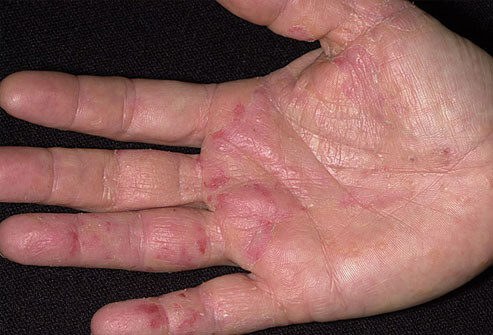 |
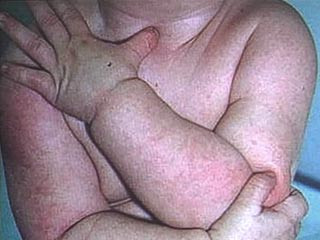 |
Eczema is a term for a group of medical conditions that cause the skin to become inflamed or irritated. The most common type of eczema is known as atopic dermatitis, or atopic eczema. Atopic refers to a group of diseases with an often inherited tendency to develop other allergic conditions, such as asthma and hay fever.
No matter which part of the skin is affected, eczema is almost always itchy. the rash most commonly appears on the face, back of the knees, wrists, hands, or feet. It may also affect other areas as well.Affected areas usually appear very dry, thickened, or scaly.
In infants, the itchy rash can produce an oozing, crusting condition that happens mainly on the face and scalp, but patches may appear anywhere.
How Is Eczema Treated ?
The goal of treatment for eczema is to relieve and prevent itching, which can lead to infection. Since the disease makes skin dry and itchy, lotions and creams are recommended to keep the skin moist.
The FDA has approved drugs known as topical immunomodulators (TIMs) for the treatment of mild-to-moderate eczema
| 1. | Moisturize frequently. | |
| 2. | Avoid sudden changes in temperature or humidity. | |
| 3. | Avoid sweating or overheating. | |
| 4. | Reduce stress. | |
| 5. | Avoid scratchy materials, such as wool. | |
| 6. | Avoid harsh soaps, detergents, and solvents. | |
| 7. | Be aware of any foods that may cause an outbreak and avoid those foods. |
Cold Sores
 |
Cold sores are also called fever blisters.
Cold sores are a painful infection caused by the herpes simplex virus (HSV).
Although cold sores generally are not serious, the infection may be life-threatening for anyone who has AIDS or whose immune system is depressed by other disorders or medications.
The infection from a cold sore may cause blindness if it spreads to the eye and meningitis or encephalitis if it spreads to the brain
Wash your hands after touching a cold sore.
Don't rub your eyes after touching your cold sore; you could develop an ocular herpes infection, which may lead to blindness if left untreated
Apply sunscreen to the face and lips before prolonged exposure to the sun.
Acne / Pimples
 |
 |
There's a reason it's called "common acne". Nearly everyone suffers from pimple outbreak at some point in life.
Women are more likely than men to have mild to moderate forms into their 30s and beyond.
Contrary to popular belief, acne isn't caused by a harmful diet, poor hygiene, or an uncontrolled sex drive. The simple truth is that heredity and hormones are behind most forms of acne.
Treatments for Acne
| 1. | Soap and water : Gentle cleansing of the face. | |
| 2. | Cleansers : There are many cleansers and soaps advertised for treating acne. They often contain salicylic acid, benzoyl peroxide, or sulfur. | |
| 3. | Herbal, organic, and "Natural" medications : |
 |
Use non-comedogenic or sensitive skin products to reduce the chance of new lesions and minimize skin irritation. |
 |
Use a mild cleanser twice a day. |
 |
Avoid cleansers or products that contain scrubbing particles or have a gritty texture. These products can irritate the skin and lead to breakouts. |
 |
Use a daily non-comedogenic moisturizer. |
 |
Avoid picking, squeezing, or popping pimples. This can lead to scarring and skin infections. |
Sun Burn
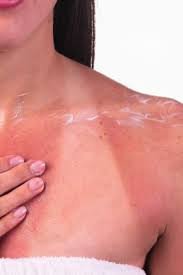 |
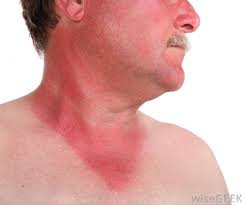 |
When your skin is exposed to the sun for a period of time, eventually it burns, turning red and irritated. Under the skin, things get a little more complicated. The sun gives off three wavelengths of ultraviolet light:
| 1. | UVA | |
| 2. | UVB | |
| 3. | UVC |
UVC light doesn't reach the Earth's surface. The other two types of ultraviolet light not only
Skin damage is caused by both UVA and UVB rays.
Sunburn is the most obvious sign that you've been sitting outside for too long. But sun damage isn't always visible. Under the surface, ultraviolet light can alter your DNA, prematurely aging your skin. Over time, DNA damage can contribute to skin cancers, including deadly melanoma.
How soon a sunburn begins depends on:
| 1. | Your skin type | |
| 2. | The sun's intensity | |
| 3. | How long you're exposed to the sun |
Signs of Sunburn
| 1. | When you get a sunburn, your skin turns red and hurts. If the burn is severe, you can develop swelling and sunburn blisters. You may even feel like you have the flu -- feverish, with chills, nausea, headache, and weakness. | |
| 2. | A few days later, your skin will start peeling and itching as your body tries to rid itself of sun-damaged cells. |
Sunburn Relief
Sunburn treatment is designed to attack the burn on two fronts relieving reddened, inflamed skin while easing pain. Here are a few home remedies for sunburn.
Compresses : Apply cold compresses to your skin or take a cool bath to soothe the burn.
Creams or gels: To take the sting out of your sunburn, gently rub on a cream or gel containing ingredients such as:
| 1. | Turmeric | |
| 2. | Wheat germ Oil | |
| 2. | Aloe |
Stay hydrated :Drink plenty of water and other fluids so that you don't become dehydrated.
Avoid the sun: Until your sunburn heals, stay out of the sun.
Use sunscreen.Cover any exposed areas of skin liberally with at least 1 ounce of broad-spectrum sunscreen. That means sunscreen that protects against both UVA and UVB rays.
The sunscreen should have a sun protection factor (SPF) of at least 30. Follow these tips for applying sunscreen:
| 1. | Apply sunscreen about 30 minutes before you go outside. | |
| 2. | Use sunscreen even on overcast days because UV rays can penetrate clouds. | |
| 3. | Reapply sunscreen every two hours or more often if you're sweating heavily or swimming. |
Wrinkles or Dry skin / AGEING
Who doesn't want wrinkle free skin? So what steps can you take to gain and maintain a glowing complexion. Wrinkle busting tips may have the solution and without the overwhelming price tag.
Wrinkle Buster Top Ten Tips:
| 1. | Wrinkles or Dry skin? Although dry skin doesn't cause wrinkles it can make your skin appear more aged than it may be. Aim to prevent dehydration by drinking plenty of water and not smoking. | |
| 2. | Green Tea has been shown to delay collagen ageing, reduce inflammation and protect from sun damage. Available as a tea, capsule or a topical treatment this is definitely an excellent way to slow down skin ageing. | |
| 3. | Repair skin with vitamin A through your diet and topical application. Vitamin A will improve cell turn over giving skin a wonderful natural glow. | |
| 4. | Oxygen is a super free way to boost your complexion. A brisk walk each day will improve blood flow and reduce tension resulting in a fresher look and feel to your skin. | |
| 5. | A silk or satin pillow is a super smooth way to prevent line marks in the morning. | |
| 6. | Witch hazel helps reduce redness and open pores that can make the skin look old and tired. Simply use after cleansing as a toner for a facelift. For drier skin types try a witch hazel cream or gel. | |
| 7. | Sun protection is the best way to prevent ageing skin. Look out for natural products like mineral makeup that offer a sun factor without the chemical overload of some sunscreens. | |
| 8. | MSM is an organic sulfur compound that can be taken as a supplement to help improve the condition of the skin by aiding toxin removal. | |
| 9. | Lemon juice has always been a popular beauty tip. Simply add a slice to a glass of water in the morning to boost the complexion with it's high vitamin C level. | |
| 10. | Reduce your sugar intake and you will improve your skin. Sugar has been linked to increased lines and wrinkles due to its inflammatory effect on the body. Help reduce sugar cravings by taking a chromium supplement to correct glucose intolerance and insulin resistance (always consult a medical proffesional. |
Hair Loss
 |
Hair grows everywhere on the human skin except on the palms of our hands and the soles of our feet, but many hairs are so fine they're virtually invisible. Hair is made up of a protein called keratin that is produced in hair follicles in the outer layer of skin. As follicles produce new hair cells, old cells are being pushed out through the surface of the skin at the rate of about six inches a year. The hair you can see is actually a string of dead keratin cells. The average adult head has about 100,000 to 150,000 hairs and loses up to 100 of them a day.
At any one time, about 90% of the hair on a person's scalp is growing. Each follicle has its own life cycle that can be influenced by age, disease, and a wide variety of other factors.
Mistakenly thought to be a strictly male disease forty percent of women have visible hair loss by the time they are age 40, according to the American Academy of Dermatology. Hair loss in women can be absolutely devastating for self image and emotional well-being.
There are many types of hair loss, also called alopecia.
What Causes Hair Loss ?
.
| 1. | Hormones : such as abnormal levels of androgens | |
| 2. | Genes :from both male and female parents, influence a person's predisposition to male or female pattern baldness. | |
| 3. | Stress, illness, and childbirth :can cause temporary hair loss. Ringworm caused by a fungal infection can also cause hair loss. | |
| 4. | Drugs : including chemotherapy drugs used in cancer treatment, blood thinners, beta-adrenergic blockers used to control blood pressure, and birth control pills, can cause temporary hair loss. | |
| 5. | Burns, injuries, and X-rays :can cause temporary hair loss. In such cases, normal hair growth usually returns once the injury heals. | |
| 6. | Autoimmune disease : may cause alopecia areata. | |
| 7. | Cosmetic procedures : such as chemical based shampooing, bleaching, and dyeing hair can contribute to overall hair thinning by making hair weak and brittle. Tight braiding, using rollers or hot curlers, and running hair picks through tight curls can also damage and break hair. |
Prevention of Hair Loss :
| 1. | Go natural : Leave your hair its natural color and texture. If that is not an option for you, give your hair time to recover between hair blowouts and chemical treatments. | |
| 2. | Choose products wisely : Use a herbal shampoo designed for your hair type. When curling your hair, choose less-damaging sponge rollers. Also, brush your hair using a moderately stiff, natural-bristle brush, which is less likely to tear your hair. | |
| 3. | Brush properly :Proper hair brushing can do as much for the condition of your hair as any over-the-counter product. |
Ayurveda for skin Health
The “Perfect Skin” Diet
You may have tried all sorts of fairness creams, moisturisers and other cosmetic skin care products, but making your skin healthy and radiant begins with what you put into your body. Some foods have significant beneficial effect on the skin that has become loose, dry or wrinkled prematurely.
Our dietary habits not only affect our overall well-being but also have a major role to play in shaping the skin’s appearance. Ideally, a perfect skin diet is one that is enriched with vitamins and minerals that promote clear and glowing skin. Moreover, our dietary options can also reduce the chance of having skin problems such as blemishes, wrinkles and redness significantly.
| 1. | Whole Grains: According to The USDA Food Guide, individuals should consume three to five servings of whole grains a day. Whole grains such as brown rice, whole grain breads, cereals and oats are an excellent source of vitamin B, biotin and selenium. These nutrients ensure that the skin remains moist and smooth besides fighting free radicals that are potentially damaging for the skin. | |
| 2. | Fruits and Vegetables :Fruits and Vegetables: Fruits and vegetables are a must for eliminating free radicals and repairing skin tissue. Seven to nine servings of leafy green vegetables and fruits, such as sweet potatoes, berries, spinach and broccoli is recommended to ascertain dewy and clear skin. These provide skin all the antioxidants along with vitamins A, C, E and B complex vitamins, beta-carotene, selenium and manganese which promote skin health. | |
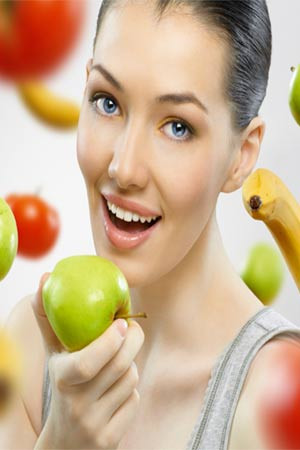 |
||
| 3. | Low-Fat Dairy Products : A rich source of beta-carotene, vitamins A, B and D, low-fat dairy products help the skin’s tissues retain its moisture. Two to three servings of low-dairy products a day are recommended and these can be found in milk, cottage cheese, yogurt and cheese. | |
| 4. | Lean Protein : Rich in iron, selenium, zinc, B complex and vitamin E, lean meats help the skin retain moisture. Moreover, these nutrients encourage collagen production for a clear complexion. The best sources of lean protein are red meat, fish, poultry, low-fat milk, eggs, nuts, beans and peanut butter. | |
| 5. | Essential Fatty Acids : Essential fatty acids help maintain and promote clear skin. Foods such as nuts and fish (tuna and salmon) are the best sources of essential fatty acids. | |
| 6. | Water : Water is as important as food to let the skin stay flexible and elastic. Stay hydrated to allow the cells in the loose areas of the skin to regenerate. |
Adequate nutrition intake and healthy skin go hand-in-hand. Consuming the right amount and type of nutrients is a prerequisite to ascertain steady skin growth, regeneration and elasticity. Make sure you have a healthful diet which not only boosts energy and improves body’s mechanisms but also helps the skin look firmer and radiant.
Our Recommended Products
Skin
Endorine






